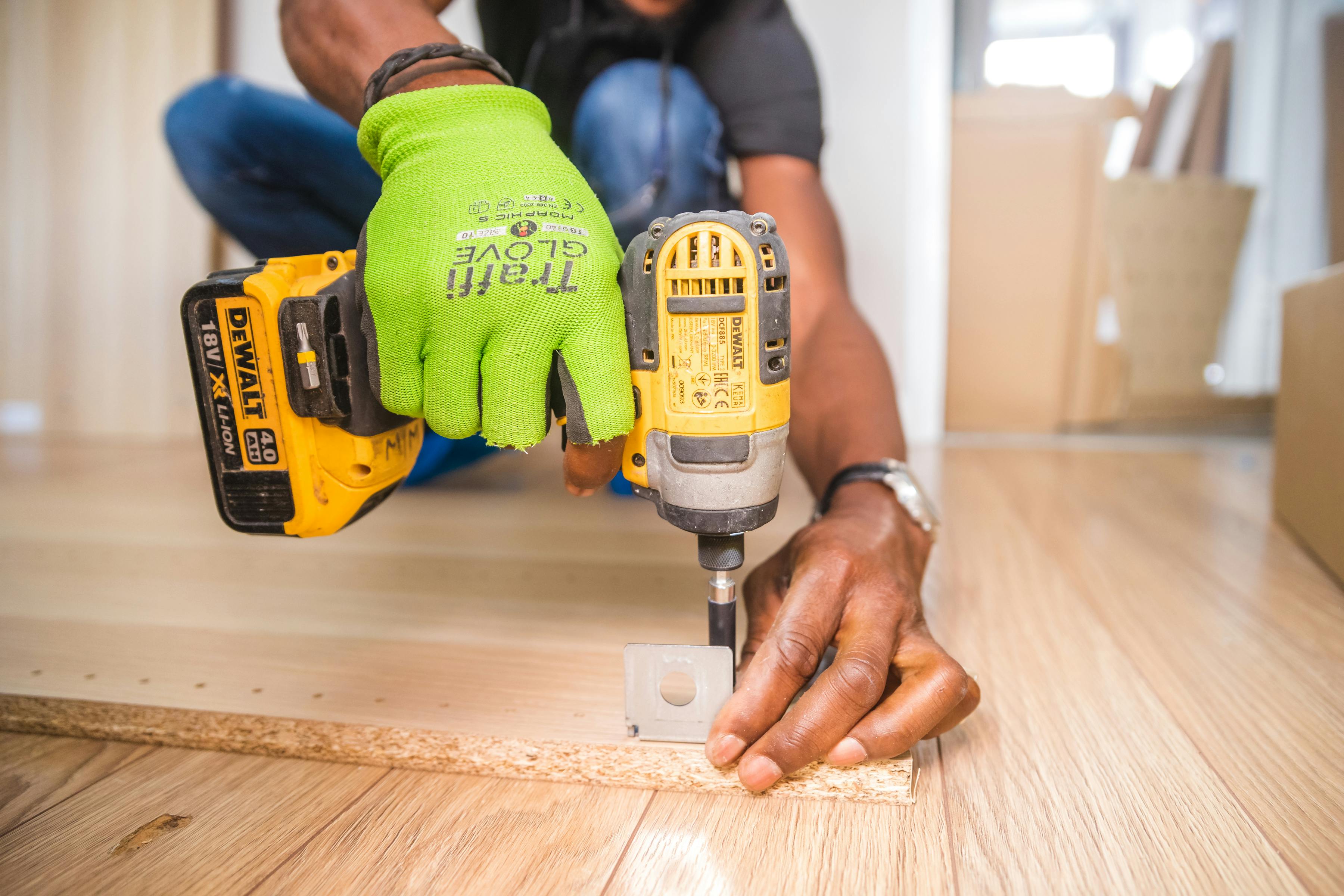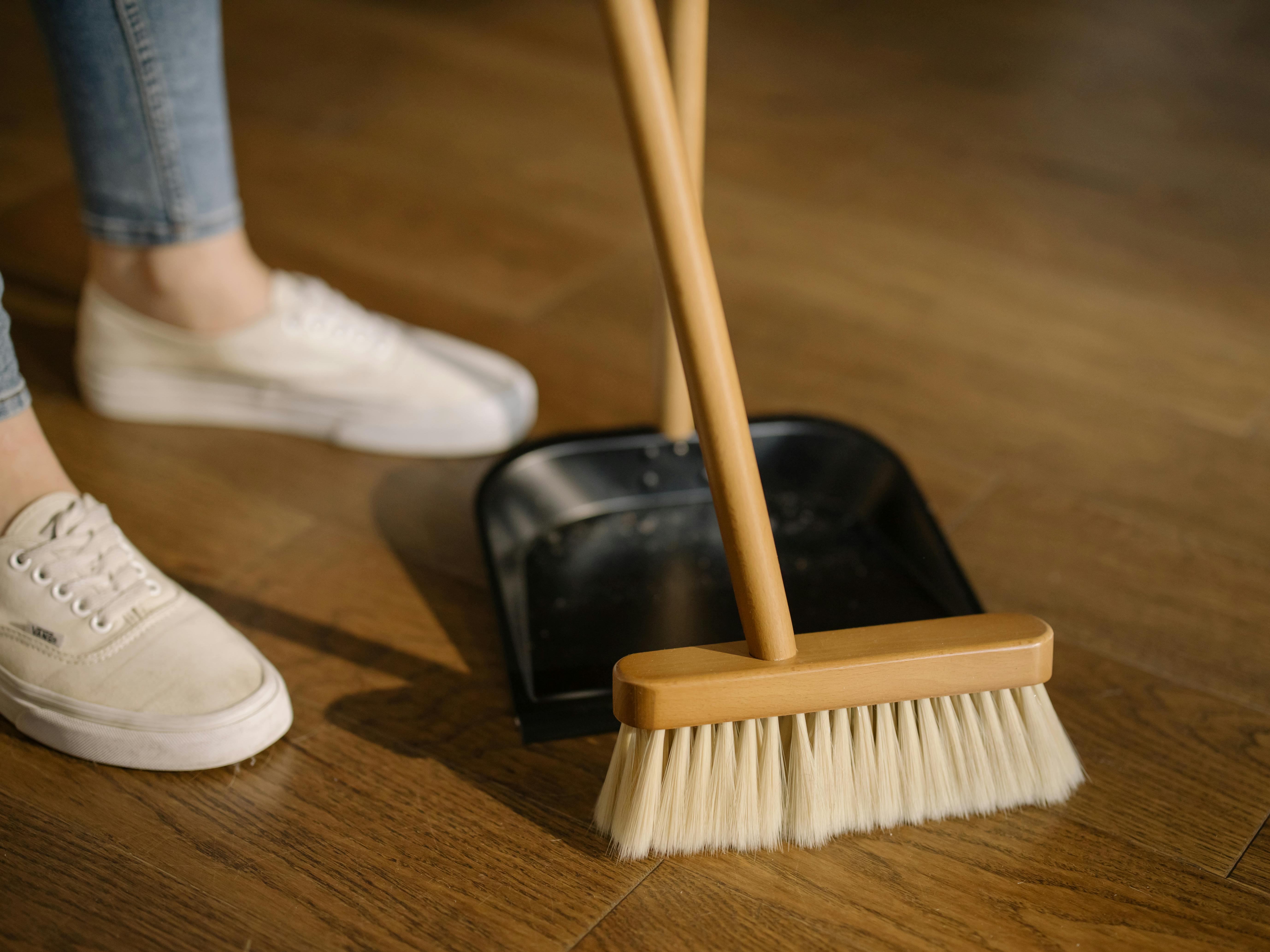
Construction and renovation projects create beautiful new spaces, but they also leave behind significant mess and debris. Post-construction cleanup is a specialized process that requires the right techniques, professional equipment, and safety measures to transform a construction site into a pristine, move-in ready space. This comprehensive guide covers everything you need to know about effective post-construction cleaning.
Understanding Post-Construction Debris and Challenges
Construction sites accumulate various types of debris and residue that require different cleaning approaches and specialized equipment. Understanding what you're dealing with is the first step to effective cleanup and ensuring all safety protocols are followed.
Common Construction Debris Types
- • Fine construction dust that settles on all surfaces and HVAC systems
- • Paint splatters, caulk, and adhesive residue on windows and fixtures
- • Drywall compound and joint compound dust throughout the space
- • Wood shavings, metal filings, and concrete dust requiring specialized removal
- • Protective film adhesive on windows, appliances, and fixtures
- • Construction stickers, labels, and temporary markings on surfaces
- • Sawdust and debris in HVAC ducts and ventilation systems
Safety First: Essential Precautions for Construction Cleanup
Post-construction cleanup involves potential hazards that require proper safety measures and protective equipment. Never begin cleanup without appropriate protection and understanding of potential risks.
Required Safety Equipment:
- Respiratory protection: N95 masks minimum, P100 filters for heavy dust and fine particles
- Eye protection: Safety glasses or goggles to prevent dust and debris irritation
- Hand protection: Cut-resistant work gloves for handling sharp debris
- Foot protection: Closed-toe shoes with puncture-resistant soles
- Clothing: Long sleeves and pants to protect skin from dust and debris
- First aid kit: Readily available for minor cuts and injuries
Hazardous Materials Warning
If your construction involved asbestos, lead paint, mold remediation, or other hazardous materials, specialized cleanup procedures and certified professionals are required. Contact certified hazardous material cleanup specialists before proceeding.
Phase 1: Rough Cleanup and Debris Removal
The first phase involves removing large debris and preparing the space for detailed cleaning. This phase should be completed before any fine cleaning begins and requires proper disposal methods.
Step 1: Remove Large Debris and Materials
- • Collect and dispose of wood scraps, metal pieces, and large construction materials
- • Remove packaging materials, plastic sheeting, and protective coverings
- • Clear walkways and work areas of tools and equipment
- • Dispose of debris according to local regulations and recycling guidelines
- • Check for nails, screws, and sharp objects that could cause injury
Step 2: Initial Dust Removal and Surface Preparation
- • Use industrial vacuum with HEPA filter for heavy dust accumulation
- • Start from top to bottom to prevent re-contamination of cleaned areas
- • Focus on horizontal surfaces, ledges, and equipment first
- • Empty vacuum frequently to maintain suction power and efficiency
- • Use compressed air for hard-to-reach areas and crevices
Phase 2: Detailed Interior Cleaning and Surface Restoration
The second phase involves thorough cleaning of all interior surfaces, fixtures, and systems. This is where attention to detail makes the difference between adequate and exceptional results.
Room-by-Room Construction Cleanup Checklist
Walls & Ceilings
- • Remove construction dust with microfiber cloths
- • Clean paint splatters and construction marks
- • Wipe down light fixtures and ceiling fans
- • Clean air vents and returns thoroughly
- • Remove tape residue and adhesive marks
Windows & Glass Surfaces
- • Remove protective film and adhesive residue
- • Clean glass inside and out with professional techniques
- • Wipe down frames and sills completely
- • Remove construction stickers and labels
- • Clean window tracks and hardware
Floors & Surfaces
- • Vacuum or sweep thoroughly multiple times
- • Remove adhesive and paint spots carefully
- • Mop with appropriate cleaner for floor type
- • Polish or seal as needed for protection
- • Clean baseboards and trim work
Fixtures & Hardware
- • Clean all switches and electrical outlets
- • Polish door handles and hardware
- • Remove protective tape and film completely
- • Test and clean all fixtures for functionality
- • Clean cabinet hardware and hinges
Kitchen and Bathroom Deep Clean
These areas require special attention due to plumbing fixtures, appliances, and surfaces that will come into contact with food or personal hygiene.
- Kitchen: Clean inside all appliances, cabinets, and drawers thoroughly
- Bathroom: Sanitize all surfaces, test plumbing fixtures for proper operation
- Ventilation: Clean exhaust fans and ensure proper operation and airflow
- Plumbing: Run water to clear debris from pipes and check for leaks
- Electrical: Test all outlets, switches, and GFCI functionality
Phase 3: HVAC System Cleaning and Air Quality Restoration
Construction dust can severely impact HVAC systems, reducing efficiency and air quality. Professional HVAC cleaning is often necessary after construction to ensure optimal performance.
HVAC Cleaning Steps:
- • Replace all air filters with high-quality MERV-rated filters
- • Clean air ducts and returns professionally to remove construction debris
- • Inspect and clean the HVAC unit itself, including coils and blower
- • Test system operation and airflow throughout the building
- • Consider running the system with upgraded filters for several weeks
- • Check and clean all vents and registers thoroughly
Professional HVAC Cleaning Benefits
Construction dust can damage HVAC systems and create ongoing air quality issues. Professional duct cleaning after construction is often worth the investment for long-term system health and energy efficiency.
Specialized Cleaning Techniques for Construction Residue
Removing Adhesive Residue and Protective Films
Construction often leaves behind stubborn adhesive residue from protective films, tape, and labels that require specific removal techniques.
- • Use heat gun or hair dryer to soften adhesive before removal
- • Apply adhesive remover or citrus-based solvents as directed
- • Scrape gently with plastic scrapers to avoid surface damage
- • Clean residue with appropriate solvents and microfiber cloths
- • Test removal methods in inconspicuous areas first
Paint Splatter and Construction Mark Removal
- • Identify paint type (water-based vs. oil-based) for proper removal
- • Use appropriate solvents for specific paint types
- • Scrape carefully to avoid surface damage or scratching
- • Test cleaning methods in inconspicuous areas first
- • Use fine-grit sandpaper for stubborn spots on appropriate surfaces
Essential Tools and Equipment for Construction Cleanup
Basic Cleaning Tools
- • Industrial vacuum with HEPA filter system
- • Microfiber cloths and professional cleaning rags
- • Mops, buckets, and specialized cleaning solutions
- • Scrapers and putty knives for adhesive removal
- • Extension poles for high areas and ceiling work
- • Drop cloths and plastic sheeting for protection
Specialized Equipment
- • Pressure washer for exterior cleaning and concrete
- • Steam cleaner for stubborn residue and sanitization
- • Air compressor for dust removal from tight spaces
- • Heat gun for adhesive removal and paint softening
- • Professional window cleaning tools and squeegees
- • Floor polishing equipment for final finishing
Exterior Cleanup and Site Restoration
Don't forget about exterior areas that may have been affected by construction activities and require professional attention.
Exterior Cleaning Tasks:
- • Pressure wash siding, walkways, and driveways to remove construction residue
- • Clean exterior windows and doors thoroughly
- • Remove construction debris from landscaping and garden areas
- • Clean gutters and downspouts of construction debris
- • Restore damaged lawn and garden areas affected by construction
- • Clean and inspect outdoor lighting and electrical fixtures
Quality Control and Final Inspection Process
A systematic final inspection ensures nothing is missed and the space is truly ready for occupancy and use.
Final Inspection Checklist:
- • Check all surfaces for dust, debris, and construction residue
- • Test all fixtures, switches, and outlets for proper operation
- • Verify all protective materials have been completely removed
- • Ensure all areas are accessible and thoroughly cleaned
- • Document any remaining issues for follow-up attention
- • Take before and after photos for quality assurance
Timeline Expectations for Construction Cleanup
Post-construction cleanup typically takes 2-5 days depending on project size and complexity. Allow extra time for specialized cleaning tasks and don't rush the process—thorough cleanup now prevents ongoing issues and ensures optimal results.
When to Hire Professional Construction Cleanup Services
While some post-construction cleanup can be done yourself, certain situations require professional expertise and specialized equipment:
- • Large commercial or multi-story construction projects
- • Hazardous material involvement (asbestos, lead, mold)
- • Specialized surfaces requiring expert care and knowledge
- • Time constraints or lack of proper equipment and tools
- • Insurance or warranty requirements for professional cleaning
- • HVAC system cleaning and air quality restoration
Maintaining Your Newly Cleaned Space
After investing time and effort in post-construction cleanup, protect your work with proper maintenance practices. Use high-quality air filters, maintain good ventilation, and address any settling dust promptly in the weeks following construction completion.
Conclusion
Post-construction cleanup is a critical step that transforms a construction site into a livable or workable space. While it requires time, effort, and attention to detail, proper cleanup ensures your new space is safe, clean, and ready to enjoy. Following systematic approaches and prioritizing safety will deliver the best results.
Whether you tackle the cleanup yourself or hire professional construction cleanup services, following a systematic approach and prioritizing safety will deliver the best results. Remember, thorough post-construction cleanup is an investment in the longevity and enjoyment of your newly constructed or renovated space.

James Wilson
Operations Manager, Demari Cleaning Company
With extensive experience in post-construction cleanup and specialized cleaning projects, James oversees construction site cleaning and ensures the highest standards of safety and quality in all cleanup operations.


